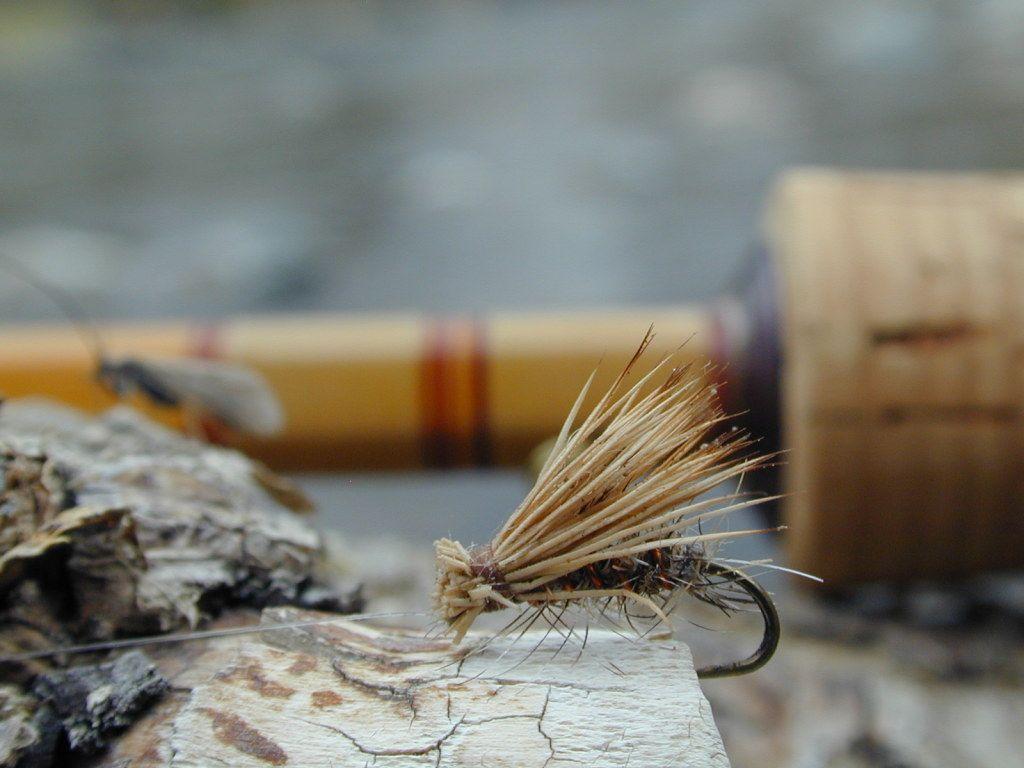West Virginia has some truly wonderful fishing. Not only is it home to some great native West Virginia brook trout streams, but thanks to its stocking program you can also catch rainbow and brown trout statewide. On top of that, some of the larger rivers that run through the state hold some great smallmouth too.
West Virginia Brook Trout
The state’s only native trout can be found in just about any cold and clean river. What they lack in size they make up for in aggression. These little guys have been known to eat dries year-round. Making them one of the most fun fish to chase in the state.
Cranberry River
This river holds more trout per acre than any other river in West Virginia. It is broken down into two sections. The backcountry and the lower section. The lower section is pretty easy to access. Making it more popular with other anglers. However, if you want a more remote experience then the backcountry section is the way to go.
If you choose to fish the backcountry section then you should know that vehicles are not allowed. Most anglers use bicycles to access this section. Also, there are shelters located in the backcountry section. Making this a perfect spot to use as a weekend fishing trip.
Your fly selection doesn’t need to be too crazy. Your basic and generic dries or nymphs will be your best bet. Hoppers and beetles do well in the summer.
Williams River
There is a 20 mile stocked section on this water where you can catch rainbows and brookies. The non-stocked section is perfect for anglers who want to go after wild West Virginia brook trout in more remote areas. Similar to the Cranberry river, you’ll be able to pick and choose if you want more secluded fishing and all the challenges it brings, or something a little bit easier access.
Most of the river has harvestable sections, but some sections are catch and release only. Make sure to check with the state regulations before heading out so that you know you’re fishing in the right area.
The non-backcountry section is great for anglers who are pressed for time and need to just pull up to a spot and throw a fly. The road runs parallel to much of this area and it’s great for angler whos just don’t want to hike or don’t have the time to do so.
Elk River
The uppermost part of the Elk River is known to be one of the best wild trout fishing destinations on the east coast. Here you’ll find great populations of wild rainbow, brown, and brook trout. If you are within driving distance of this river then it is worth a day or weekend trip to check it out to see if you can and one of those 20-inch fish that the locals talk about.
It’s a little bit different than a normal limestone spring creek. There are sections with fast water that might intimidate some anglers. However, it’s this faster water that makes the fishing a little bit easier. As long as you’re careful and don’t get too far out into the faster water then you’ll be just fine.
If you want, you could fish some of the tributaries. These smaller streams are more like your classic brook trout waters. Slower, clean, and clear, and they hold some wonderful native brookies.
Fly selection is important here. These fish are a little pickier and you’ll need to be able to closely match the hatch. With this knowledge, it’s best to call a local fly shop to get their recommendations. They’ll know what’s hatching or about to hatch during your trip and they’ll let you know what to fill our fly box with.
Seneca Creek
This is a managed wild trout stream. Home to both native brook trout and wild rainbows. The stream is over 9 miles long before it flows into the Potomac. If you want to fish the better parts then you’ll need to hike into the backcountry. You’ll find the Seneca Creek trail gives you access to most of the stream.
Seneca has excellent water quality and is going to be your classic small stream brookie fishing. There are a few sections that are accessed by the road but these areas get fished heavily. Just hiking a mile can improve the fishing and hiking 2-3 miles could mean you’re throwing flies to a fish that has never seen one before.
Rainbows can be found in the faster water and riffles where brook trout prefer the slow to moderate currents. Casting towards and bubbles, tail outs, and past rocks and logs will result in a lot of success. Short and accurate casts will yield more fish than long ones. Always approach runs and pools with stealth.
North Fork of the Cherry
The north fork is one of two headwater streams that lead to the cherry river. This is small water fishing but can get fast in sections. The water is clear, cold, and clean. Making it great trout habitat, where the fish can hold over year after year.
Because of the holdover, you’ll be getting into some pretty good-sized fish. The stocked rainbows grow quickly and can reach pretty good sizes. On top of that, you’ll find some solid native brook trout fishing too.
There are plenty of good runs and pools that can hold fish. it can get a little tight in some spots though, so it’s best to bring a shorter rod and to work on your bow and arrow casting. This is going to help you put those flies exactly where you need to, which is not in the trees.
Final Thoughts
Check out these five spots if you’re looking for some good West Virginia brook trout fishing. Did I miss any? Let me know in the comments below!



